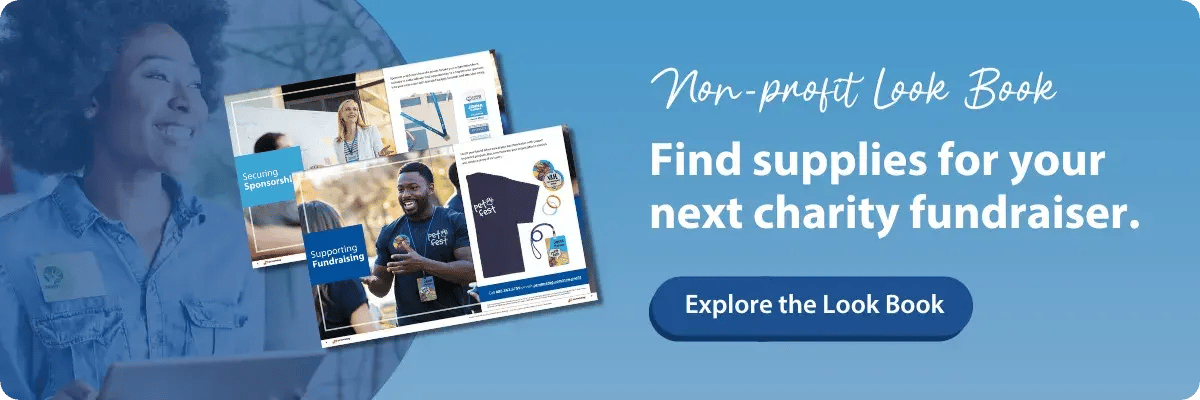
Jenny Zhang
As pc/nametag's Marketing Communications Intern, Jenny is passionate about creating informative content that fosters engagement and sparks discussions within the events industry.
Your nonprofit’s fundraising team just hosted an incredible event. Attendees were engaged, donations were rolling in, and you increased community awareness of your charitable mission. 🎉
But your work isn’t over yet. Effective post-event analysis and relationship-building are just as important as the event experience itself. By thoroughly evaluating your event and keeping attendees in the loop, you can maintain support and learn from your successes and hurdles.
In this article, you'll learn five tips for a better post-event analysis process. Read on to learn how to implement these strategies into your non-profit fundraising event strategy, this year and beyond!
Table of Contents:
- Evaluate your fundraising data as a team
- Survey participants and event attendees
- Identify fundraising successes and challenges
- Thank attendees, donors, and volunteers
- Lay the groundwork for ongoing supporter involvement

5 Tips for a Stronger Post-event Analysis Process
Let’s start by exploring how you can use statistical analysis to assess the effectiveness of your event.
1. Evaluate your fundraising data as a team.
After your event, start your analysis by evaluating your fundraising results. Did you reach your fundraising goal? Did your predictions align with reality?
Dive into your data to study your results. Use your event management software and fundraising system to assess metrics such as:
- Total donation revenue
- Fundraising event ROI
- Attendee donation rate
- Most successful fundraising channels or appeal types
In addition, track online metrics for your event’s digital presence, such as your event microsite, online registration page, and giving form. Bloomerang’s donation page guide recommends making these online resources and forms as simple as possible to keep supporters’ focus on the giving or event signup process.Only ask for necessary information, such as names, contact details, payment information, and donation amounts.
Note areas where you over- or under-performed during your event. This will allow you to start investigating the underlying reasons why that happened.
For example, did you encounter unexpected costs that drove down your ROI? Did you see major success from a fundraising channel you weren’t expecting? Identifying the circumstances surrounding your event data will help you develop a more targeted fundraising strategy next time.

2. Survey participants and event attendees.
Hearing attendees’ perspectives on your event can be invaluable. Guests can offer unbiased insights into what went well and what could be improved in the future.
To gather this data, email event participants with a survey asking open-ended questions that inspire them to reflect more deeply on the experience, such as:
- How did you hear about this event?
- What made you want to participate in this experience?
- What was your favorite part of the event?
- What was your least favorite part?
- Would you attend this event again? Why or why not?
- Do you have any suggestions for making this event even better next year?
- How would you prefer to receive event-related communications from our nonprofit in the future?
Store participants’ survey responses in your nonprofit CRM database to better align future outreach with their preferences. For example, event attendees will appreciate receiving follow-up communications via their preferred communication platform, whether email, text, social media, or direct mail.
After collecting responses for a defined period, such as a week, round up all survey results to identify patterns and trends. Prioritize acting on the most common feedback you receive. For example, let’s say many attendees expressed interest in having more food options available at your annual summer festival. Next year, focus on reaching out to more restaurants in your community to ask them to set up a booth at your event.

3. Identify fundraising successes and challenges.
Combine your fundraising data with the information from participant surveys to identify your most significant successes and challenges from the event process. For example, you might evaluate your event’s metrics and survey results and identify the following takeaways:
Fundraising Successes:
- High new attendee rate
- Widespread community event awareness through media coverage
- Positive event ROI
Fundraising Challenges:
- Venue technical issues
- Low attendee donation rate
- Team communication challenges
Identify potential fixes for your challenges that your team can implement ahead of your next event. For instance, let’s say you’re assessing the results of your organization’s annual silent auction. If tracking bids and checking out attendees efficiently were a challenge, you could implement silent auction software to streamline these activities in the future.

4. Thank attendees, donors, and volunteers.
Maintain momentum and spread positivity after your event by sending heartfelt thank-you messages to everyone who contributed to its success. These individuals may include attendees, donors, volunteers, corporate sponsors, and peer-to-peer fundraisers.
Recognize supporters and thank them for their involvement using tokens of gratitude such as:
- Social media shoutouts
- Goodie bags
- Personalized thank-you emails
- Event recap videos
- Handwritten gratitude notes
Personalize the messages using information from your nonprofit’s supporter databases. For example, using data from your nonprofit’s volunteer management system, you can personalize your volunteer thank-yous with specific references to each individual’s contributions and impact.
Your message could read: “Thank you for contributing 20 volunteer hours to help plan and execute our event! Because of your dedication, we raised $20,000 to support youth experiencing homelessness in our community!”
Along with general thanks, don’t forget to send additional thank-you messages to participants who completed your post-event feedback survey.

5. Lay the groundwork for ongoing supporter involvement.
Supporters will be much more likely to attend future events and help with your nonprofit’s event analysis when you deliberately build relationships with them.
Continue sending messages via supporters’ preferred communication platforms to highlight additional ways to connect with your organization regularly. For example, your messages can:
- Spotlight similar upcoming events. Send personalized messages to invite supporters to engage with other events and campaigns your organization hosts. For instance, you could send an email saying, “Your personalized event roundup: Based on your past involvement, here are some additional opportunities we thought would pique your interest.”
- Send a variety of low-lift requests. Not every message you send supporters should be an invitation to register for an event or donate. Invite attendees to engage in various lower-commitment forms of support, like signing up for your email newsletter or following you on social media.
- Provide impact updates. After your event concludes and you’ve had time to tally your fundraising totals and put that money to good use, let supporters know the real impact of their contributions. You might send them photos of the new house you built in your community for a family in need with the funds raised at your event.
These stewardship activities encourage event attendees to become long-term supporters of your nonprofit’s mission, boosting your donor retention rate. The key to forming genuine relationships is mixing your fundraising messages with non-fundraising-related information to avoid donor fatigue.
Shop Non-profit Fundraising Supplies from pc/nametag
Make fundraising fun and easy with fundraising supplies from pc/nametag, including custom-branded name tags, fun promotional gifts, branded office supplies, and more for non-profit organizations.
- Raise awareness with custom branded t-shirts, buttons, pins and more.
- Shop for custom name tags, event passes and certificates for any type of fundraiser.
- Always have supplies on-hand with brandable donation envelopes, folders and pens.



Submit a Comment